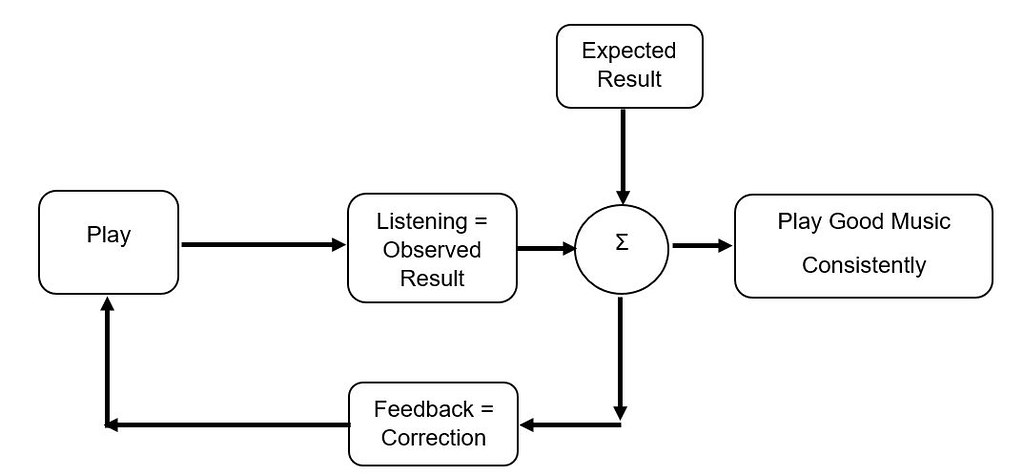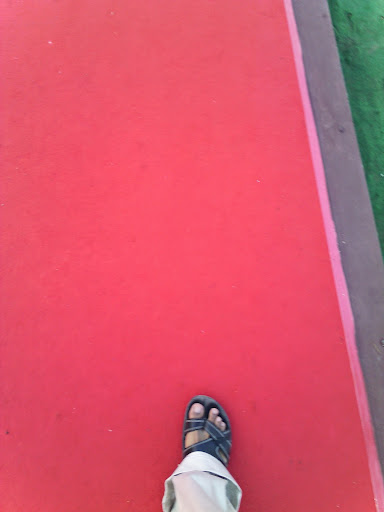As a beginner violinist, it is obvious that we are curious how the sounds differs just by moving fingers over strings tightened over a piece of wood. This curiosity jumps to next level when we become conscious of where we place fingers. This graduates to being cautious as to why we place fingers a certain way and why it is right or wrong. All of this becomes a habit, a bad one, reparable with practice. The next level of which is to play by the ear and know the relative positioning of the fingers on the string by mind. This spacing and relative positioning of fingers is strongly linked to how we hold the violin and how comfortably we can hold it there for a prolonged duration of play. This emphasizes the importance of practice, practice of holding, habit of practice, that it becomes second nature to the player like any language, or like any extensions to human body like a bicycle, mobile phone or using any clothing. Similarly, the violin becomes an extension to the body of the player. In time. In practice.
Watching our fingers during the play can be equated to micromanaging our play. This unwanted puts stress on us watching the fingers rather than the output of it, which is the sound generated. Instead of the action, if we become result oriented, then we start playing by the ear, listening to what kind of sounds we create, and what kind of fingering can improve, and match the requirements of the composition. This voids the need to mechanically adjust the relative placement of fingers and improve focus on the expected frequency output. Hence it is imperative that we practice without watching the fingers and adopt a more result oriented approach.
Player’s focus improves with avoiding watching the fingers. Watching the fingers, rather than listening to the sounds, distracts the processing of the output. Staying on Focus helps because, the player gets a bigger picture than a mere positioning of finger on the string. In life as well as in playing the violin, if we can get to see the forest and not get lost in the trees, then we get our heading straight and would not let the minutiae obstruct the flow of thought/music.
Of course, this thought is for avoiding over-observant players who check each and every fingering position on the ebony. When moving to a different base position playing in the 2nd or higher, without a firm grasp of the basics and building the foundation.
The player learns Management by Objectives. The objective of the play is to play beautiful music, not just create some random sounds a.k.a noise. The objectivity defines our action. This lets our focus stay on the music emerging out of the wood and strings rather than micromanaging to the negative effect. Not watching fingers let us manage our play by objectives. The objective of making better music.
Fig. Basic Control Systems Play-Feedback loop for music practice.
Borrowing from Control Systems concept. Generally, music practice sequence looks like that shown above. Playing by the ear yields a difference between the expected and observed results giving valuable feedback, that helps in perfecting and bettering the play. This also applies to general activities in life with an expected result. Oftentimes, people miss learning from the observed result and matching and finding the difference. This differential knowledge if captured appropriately leads us to derive lessons learned simply by using observational skills and then performing corrective action. Any solid expected activity should also be defined with as much detail as possible, so that we can maximize the lessons learned and act upon it to provide consistent results that improve with each dedicated practice and delivering consistently good music as close to the expectation.
Read more from this series here :-
- Life Lessons from violin class : Lesson 1 : Do not think ! - After learning some basic notes on the staves I was told to know it by heart. I had to memorize it, and then tell when I see a note. I used to count, say memorizing only the first not in space , the “F” on Treble clef. From there on I would count and then … Continue reading Life Lessons from violin class : Lesson 1 : Do not think !
- Life Lessons from violin class : Lesson 2 : Don’t work hard - The power of doing work is a single most important criteria that distinguishes a human as a social animal compared to others. The collective and individual efforts towards a work makes one understand the minute and the big picture at the same time. All work is not easy. It is also possible that some workaholics … Continue reading Life Lessons from violin class : Lesson 2 : Don’t work hard
- Life Lessons from violin class : Lesson 3 : Emphasize on Quality of Practice - I read “ Debunking the 10,000 hours rule “ after my previous lesson learned. My previous lesson learned said about not working hard. The working hard part is broken into small steps taken one at a time to overcome the hardness of the work. This works for people who are ready to be steady and … Continue reading Life Lessons from violin class : Lesson 3 : Emphasize on Quality of Practice
- Life Lessons from violin class : Lesson 4 : Don’t tap your foot out loud. Focus on what you play. - In violin class I have been taught to keep the rhythm of the song by tapping with the foot. The human metronome works parallel to the song being played. Often we have to shift attention from the song and listen to see if the rhythm and beat is correct per bar. This shift in attention … Continue reading Life Lessons from violin class : Lesson 4 : Don’t tap your foot out loud. Focus on what you play.
- Life Lessons from violin class : Lesson 5 : Practice till perfection - Practice, practice, practice. Quantity and Quality all matters. Playing any musical instrument is all about practice. It is all the more true for the violin. As a student I have to practice. I know I can. I know I will. But how much ? Till my hands ache ? Till I feel it is enough … Continue reading Life Lessons from violin class : Lesson 5 : Practice till perfection
- Life Lessons from violin class : Lesson 6: Health conscious practicing - If there is one thing in life,that is more dearer than the life itself, it is health. Life without good health is a misery. And life is maintained through good health. Longevity of life, if one wishes it, is not very pleasant without an accompanying good health. A good marriage between health and life makes … Continue reading Life Lessons from violin class : Lesson 6: Health conscious practicing
- Life Lessons from violin class : Lesson 7: Start slowly grasp quickly - The v.v. age old saying goes an umpteenth time to say ” Slow and Steady wins the race” . This is because it is true. But the beauty of the truth lies in experiencing it in action. As with violin or any musical instrument, the beginning is really very slow. It is expected to be … Continue reading Life Lessons from violin class : Lesson 7: Start slowly grasp quickly
- Life Lessons from violin class : Lesson 8 : Don’t watch your fingers - As a beginner violinist, it is obvious that we are curious how the sounds differs just by moving fingers over strings tightened over a piece of wood. This curiosity jumps to next level when we become conscious of where we place fingers. This graduates to being cautious as to why we place fingers a certain … Continue reading Life Lessons from violin class : Lesson 8 : Don’t watch your fingers



